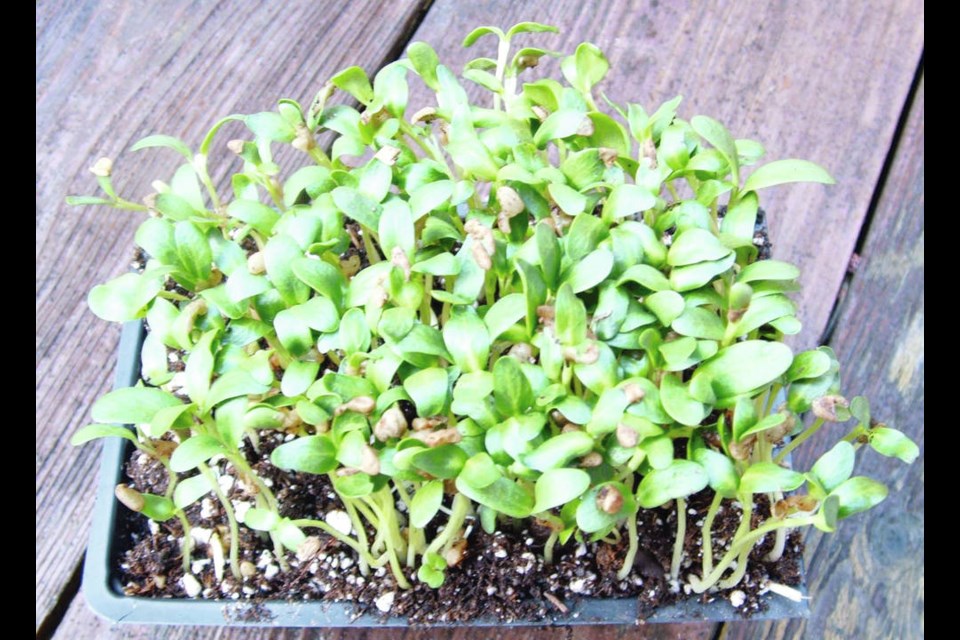I’m an enthusiastic fan of farmers’ markets. Some, luckily, run close to year round. Though they may be somewhat less sumptuous through the winter months, I’ve been surprised lately at some new stalls at my local market. Last month, a grower showed up with the most amazing winter vegetables — fat parsnips, plump Brussels sprouts, gleaming red and green cabbages.
Few of us have the space, or the time, to grow every fruit and vegetable that we wish to consume. Farmers’ markets give us access to locally grown, fresh foods, and an opportunity to support growers in our communities.
A recent visit to my local Saturday morning market turned out to be remarkably fruitful in terms of interesting and useful information as well as fresh, tasty foods.
The first stall I came to had lovely heads of red butterhead lettuces. When I asked the young grower about the variety and his seed sources, he raved about Osborne Seeds in Washington as being very supportive of regional growers. Another seed source to explore.
Then there was the familiar vendor of balsamic vinegar in many natural flavours. My favourite is a pineapple-ginger infusion that forms the base for most of my salad dressings.
At a local cheese company stall I bought a container of quark, a sort of fermented cream cheese. I’ve been using it to make a cheesecake topping over fruit desserts. The woman at the stall told me that her quark, spread on toast, topped with cucumber slices and seasoned with salt and pepper is her “go-to” breakfast.
I came next to Donna Balzer, a local gardening author and speaker, at her table of microgreens. That week featured small flats of fenugreek, which had become a staple in her household. I brought a flat home, perched it on a kitchen windowsill, and used half the greens that evening in a salad of grated daikon radish, apple, and carrot in a pineapple-ginger balsamic vinegar, Dijon mustard and sour cream dressing.
Fenugreek is not a herb I’d grown before. What I liked most about the young greens was their curry-like aroma. Ground fenugreek seeds are used in curry powder. This is an easily grown, 60-cm tall annual that bears fragrant pea-like flowers in summer.
West Coast Seeds, which added fenugreek to its herb listings this year, describes it as being widely used in Mediterranean, Middle Eastern and South Asian cuisines. It’s a legume, meaning that, if the plants are allowed to grow to maturity, they will fix nitrogen in the soil, like peas and beans.
Microgreens. At about the same time that I acquired the little flat of fenugreek microgreens, I was making an inventory of seeds I had on hand. I list them in a notebook and file them in big envelopes by month of planting. As I do this, I make a separate list of seeds I need to buy.
Because it’s useful to know how old leftover seeds are, I mark every packet with the year of purchase. As I went through the seeds, I pulled out a few of the oldest ones to grow in pots on a windowsill for use as salad and garnishing greens. I chose ones that produce edible young shoots, like lettuce, peas, broccoli, cilantro, basil and sunflower. It won’t matter if some don’t germinate. I can just reseed in the same pot with something else.
Seashore ethics. Bob has written to express his concern over gardeners using local beaches as a source of materials for landscape projects.
Bob lives in a Saanich neighbourhood near a bay where a sign was installed to remind people how important it is to leave beach ecosystems intact. He wishes all the beaches had these signs reminding everyone how vital sand and gravel beaches are to life in the ocean. Among the requests on the sign: “Leave the shoreline as you found it. Don’t remove sand, gravel, rocks, driftwood or seaweed.”
Next week. I’ll be taking time off from writing the columns for next week. I’ll be back answering your questions on Wednesday, Jan. 6.
Watercolour course. The Horticulture Centre of the Pacific, 505 Quayle Rd. in Saanich, is offering Watercolours with Richard Wong, an online course, on Thursday, Jan. 14, from 6 to 8 p.m. The class is an introduction to watercolour painting. Cost is $20 per screen. Register by calling 250-479-6162 or online at hcp.ca, under Community Education, where you will find details on the course and instructor.



